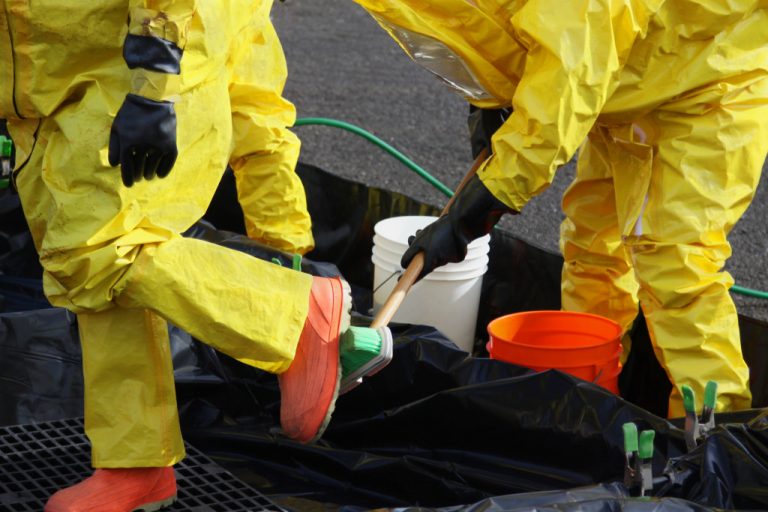Emergencies and natural disasters can occur at any minute. Whether they’re natural, human-caused, or technological in origin, your business should be ready.
Emergency and disaster preparedness is an important activity that every business should practice. It ensures that a company will continue operating even after suffering from a disaster or encountering a crippling emergency. Through careful research and planning, you can prepare your business.
An emergency plan will guide you on what to do before, during, and after an emergency occurs or after a disaster strikes. It should include the following.
For Emergency Preparedness
To prepare your business for emergencies, the US Small Business Administration (SBA) recommends the following steps.
Step 1: Conduct a Risk Assessment
First, assess the risks of your business.
Each business has its own weaknesses. A risk assessment helps discover vulnerabilities that your business has. It’ll expose the risks of your business when it comes to common emergencies and potential dangers such as natural calamities, technological attacks, and human-caused hazards. Knowing what risks will negatively affect your business can help you prepare for them. Understanding them better will help
you resume operations faster.
Step 2: Create a Plan
Next, create your response plan—a plan more than just a preparedness strategy in case of emergencies or against security attacks. According to the SBA, it is your road map to recovery.
An emergency management plan is a set of instructions that serves as a guide for you to follow when natural disasters happen and stop your business from operating. It also aims to prevent emergencies, such as human-caused hazards and technological attacks, before they happen. It covers procedures, alarm systems, evacuation plans, fire safety, disaster kits, key emergency contact details, and other protective actions for life safety.
Considering all of this, an emergency plan should be easily accessible by your staff in case you’re not available when an emergency occurs.
However, an emergency plan should be customized according to your company’s operations and specific needs. According to the SBA, you can use checklists and tool kits provided by three federal agencies, namely the U.S. Occupational Safety & Health Administration (OSHA), Internal Revenue Service (IRS), and Federal Emergency Management Agency (FEMA).
Step 3: Be Ready to Execute Your Plan
With a plan at your disposal, you are now ready to face and respond to any emergency. However, it has to be practiced first.
Schedule a date to discuss your company’s emergency response plan with your employees. They should be trained about protection, warning, communications, alarm, detection systems. They should be familiar with their roles and responsibilities in carrying out emergency mitigation.
Conduct drills regularly so that employees know what to do during evacuation. Train them to recognize different alarm and warning systems. Teach them how to do sheltering-in-place properly.
Training exercises will help employees know how to respond to emergencies and disasters. It will also help you recognize gaps in the plan to improve it. It can also help you identify deficiencies in your facility, office, or storefront. Instead of commercial custom engineered fire doors, you could be using the wrong type of doors and would not even know if it were not for the emergency plan. This can help you make the necessary changes.
For Business Resiliency
After an emergency or disaster, your business needs to recover. According to the SBA, you can get financial assistance for costs incurred due to repairing and replacing business-related assets, inventory, equipment, machinery, and real estate. They provide economic injury loans, military reservist economic injury disaster loans, and home and property disaster loans for affected businesses.
Step 1: Recovery Planning
Aside from securing disaster funds, you should also start recovery planning, according to the Department of Homeland Security’s national public service campaign, Ready.
A recovery plan, often referred to as a business continuity plan, will help your business prevent substantial financial loss. It should include evaluation of recovery strategies, organization and assembly of a business continuity team, and the identification documentation of critical business processes and functions.
Step 2: Pivoting Your Business
For some businesses, pivoting their operations is an effective strategy to remain resilient. To start pivoting your business, however, you need to revisit your business plan, review it, and look for ways to change an aspect of your business. This will help you survive any disaster.
Focus on Prevention

While natural disasters can’t be prevented, there are still hazards that you can avoid and prevent. For business resiliency, focus on this instead and strengthen your recovery plan. Regular safety audits will keep your emergency plan and safety systems updated, thus helping you prevent human-caused hazards and technological attacks.
If you do all of this, you will indeed champion business resiliency. You will be prepared for any emergency and disaster.



